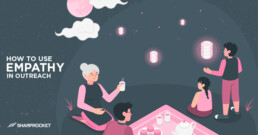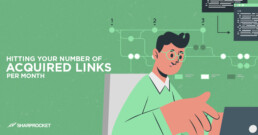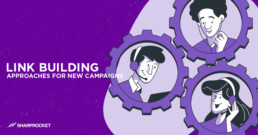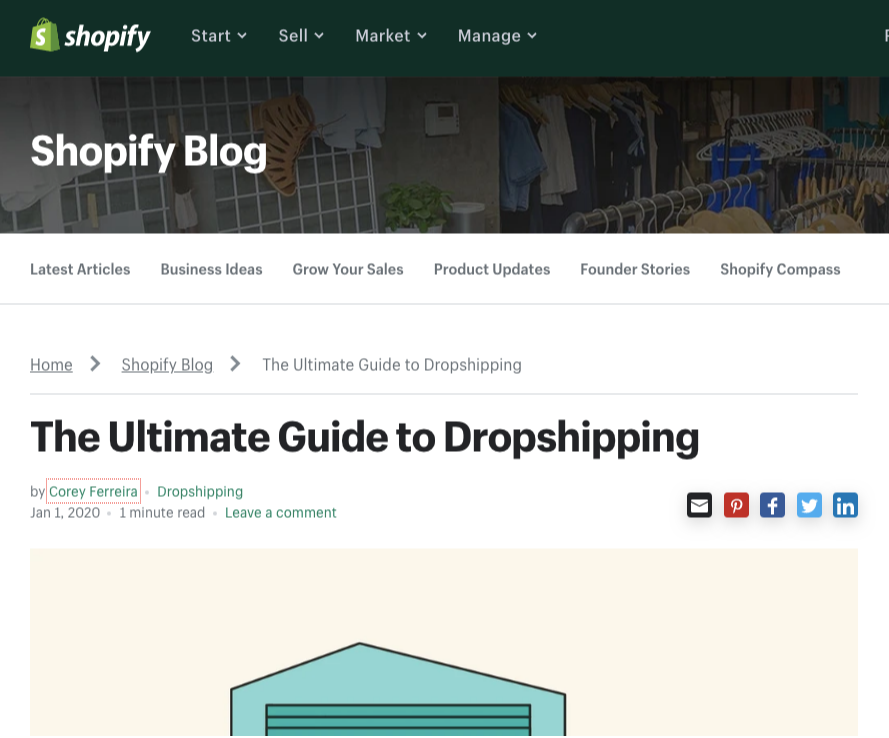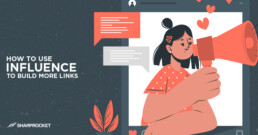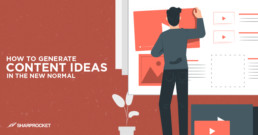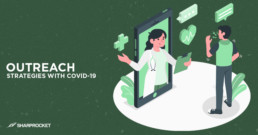Source to Content Creation Strategy
This is where you get publishers to link to you without begging. Instead of you reaching out to people who might link to your page, you might as well want to let them come to you and give you links, without you even noticing that you even got those backlinks.
[podcast_subscribe id="26132"]
How can you do apply this link building strategy?
First is to find source-to-cite- queries. These are keywords, words, phrases that people are searching for when they are looking for more references to consider when they’re creating their content. It’s like when they are in their research phrase for their content. So normally they would go on Google and type in reference-like keywords.
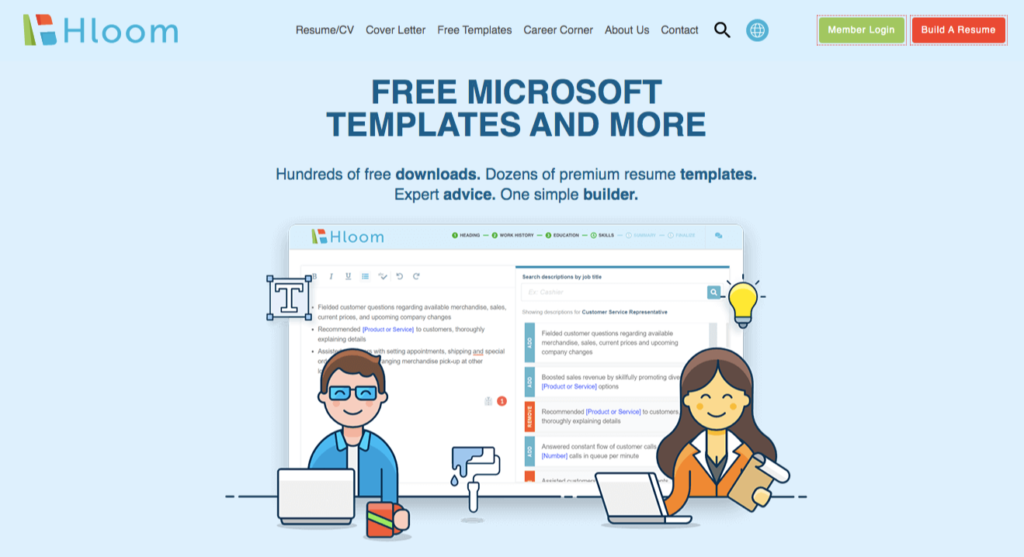
So you want your content to be on the top spots when they search for their keywords. Because chances are your content will be picked as one of their references (giving you links from their content).
So those keywords are statistics, templates, letters & proposals. For example in the career space, bloggers who are writing about job hunting might go to Google and search for resume templates. So you as a content creator, you want to rank for those keywords, because other content creators might use your resume template page in their content (with links to it).
You wanna make sure to check those keywords if there are linking opportunities. To do that, you use Mozbar which helps you quickly check on the search results the number of referring links to the pages ranking for the query.
The reason why you have to do this is that you want to make sure there is a linking potential in that keyword that you’re targeting.
The next thing you want to do is to create content targeting the source-to-cite query, whether that is a statistic, template, or proposal.
You may want to check these websites to gather some public data information. Websites like data.gov, data.worldbank.org, reddit.com/r/datasets, and statista.com
After you build the content, you also want to promote it to gain backlinks. So that it can rank for the keyword you’re targeting.
So how do you apply a source-to-cite link building strategy?
Find keywords content creators are searching for when they are researching for additional references for their content. Then check using Mozbar to see if there are linking opportunities for that keyword. Then create content around that topic. It could be a template, statistic, or proposal.
How to Create Resource Content Guides For Linkable Audiences
Have you ever wondered why marketers are too confident with their content? The reason is that they know exactly that what they've created has the potential to earn links once they promote it.
[podcast_subscribe id="26132"]
This is how you can guarantee links even before creating the content.
Linkable audience is a term coined by Garret French, founder of Citation Labs, who is also a good friend of mine.
He says, that linkable audiences are audiences who belong to communities with high-level academic, medical, and government interest.
And so these audiences are more receptive to giving you backlinks, given they want more resources, data, and references for their content.
Now, what you want to do is look for these linkable audiences first before creating content. Because you will create content to match and target a specific linkable audience. Given you know these audiences can link to you, you can guarantee links even before you create the content.
Here are some linkable audiences. We have teachers, caregivers, parents, senior citizens, veterans, health conditions sufferers, job seekers, unemployed, workers in the non-profit sector, immigrants, people with disabilities, local community, students, families of substance abusers…
So step one in using this link building strategy is to create a resource guide based on your chosen linkable audience.
So let's say your brand can target parents. So wanna make sure you don't get go too far from your target customers. Check your target customers and see if any linkable audiences ring a bell to you.
So if you're selling mattresses, and beds, you can create a guide to target parents. So you can have The Ultimate Parent's Guide to Sleep For Kids. Another example is to target people with PTSD (post-traumatic stress disorder), and create a guide just for them. PTSD and Sleep Problems guide for example. So now each guide you create is targeted to a specific audience.
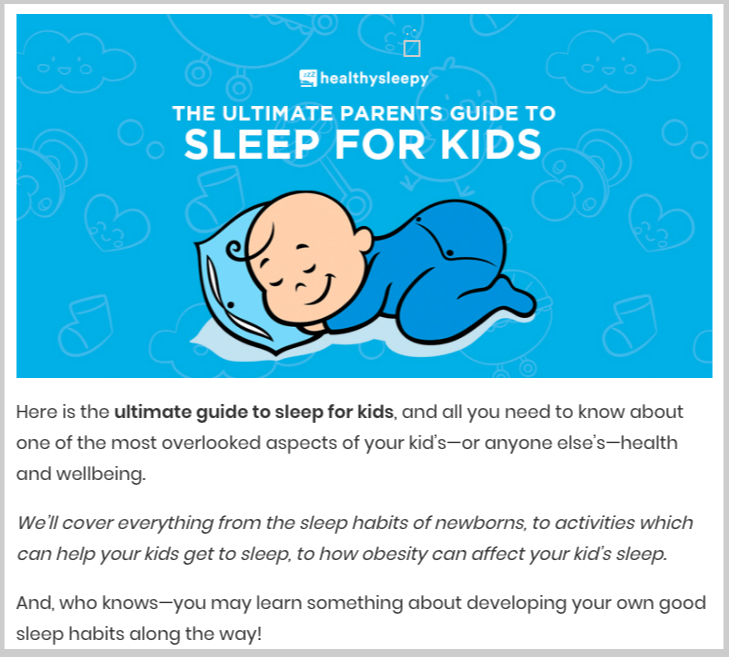
The next thing you want to do is to get a list of resource pages within your target audience. So if you're targeting people with PTSD, you wanna look for resource guides that have a list of references about curing PTSD or helping people with such disorder.
You can use a resource page prospecting spreadsheet which we include our Broken Link Building blueprint.
You can also check similar content for more link opportunities. These are content that your competitors might have or other websites published that talks about the same topic, in our given example, these are pages that talk about PTSD. To find all of the pages that link to these similar content, and add them as your backlink prospects in your link prospecting spreadsheet.
Make sure your spreadsheet is well-organized. So you can include columns for each detail about your backlink prospect.
Next, you wanna do is to find broken links using LinkMiner. The reason you want to look for broken links on a resource page that you just prospected is that the broken links are your value proposition in your outreach.
So when you send an outreach email, you say that you've found a broken link in their resource page. And you want to fix it by suggesting a replacement, which is your content.
So that is the link building strategy using resource guides for linkable audiences. You choose a linkable audience, create a content piece around it, find resource pages that talk about your audience, reach out to owners of these resource pages and let them know of any broken links they have, offer your content as replacements, and boom, you get the link!
How to Create Consistent Content For Your Business
Content marketing is not that easy. It takes efforts, processes, and resources to create consistent content for your business.
Whether you think you don't have the time to market your business with content, or you think you can't follow through with your content calendar, or as simple as you don't know where to start, there is a way to get through this.

In this post, we cover the four steps to help you create consistent content for your business.
How to Create Consistent Content For Your Business
1. Systematize Your Content Creation Process
What gives you consistent results is a process that provides consistent output.
Like following any system (e.g. ordering a food), you would expect an outcome based on your inputs. The better your resources (inputs) and the smoother flow going through from step one to step two until it reaches its desired destination (last step), the higher the quality output you can expect from it.
Different businesses have different methods of creating content based on resources, industry context and expertise, brand guidelines, and other pertinent factors to content creation.
Regardless, there are two overlooked initiatives before actual content creation: analyzing and strategizing content assets.
Oftentimes marketers jump off to content creation without performing a content audit and taking any derived analysis to validate relevant content.
Two Overlooked Initiatives Preceding Content Creation
Analysis Through Content Audit and Content Inventory
What content audit does is that it allows you to discover where your direct competitors are currently ranking so you can find target keywords and topics with traffic opportunities.
You can check out this guide on competitor analysis for content creation. With the help of Ahrefs, you can easily export data into CSV and have it organized in Google Sheets.
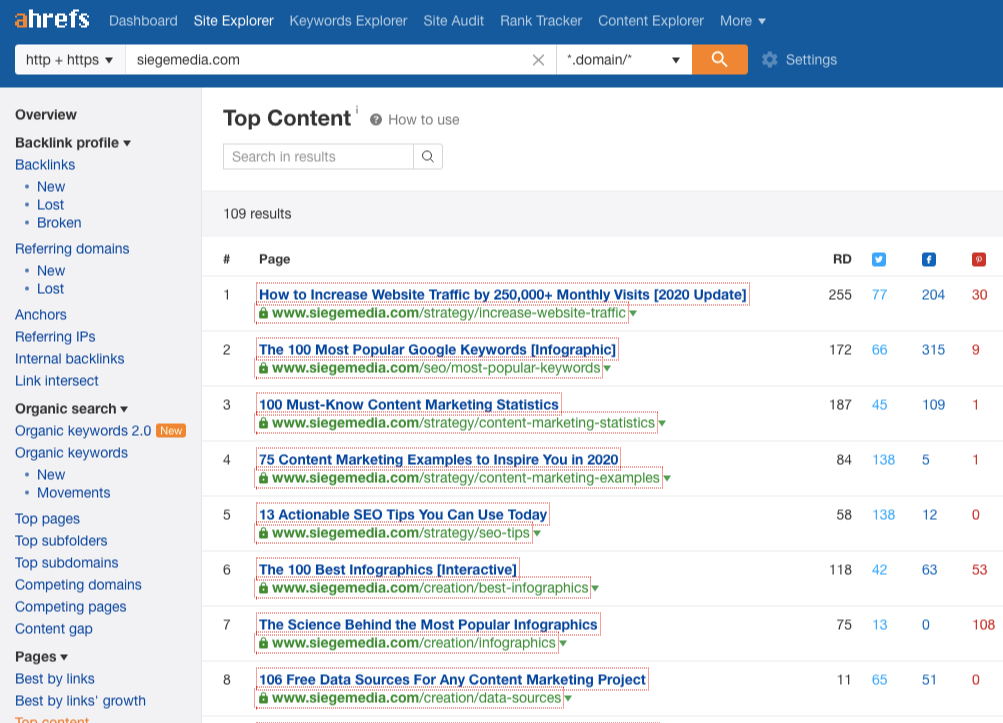
Besides competitor analysis, what you can also do is have a content inventory of your website.
Here is a good definition of content inventory.
“A content inventory is a complete listing of every page on your website, with associated meta information and metrics, which allows you to make both general and specific evaluations of your website content.”
I've covered a detailed guide on content inventory that shows five quick action plans to get started with the process.
Here is a quick summary of these action plans.
- Identify content archives worthy of updates
- Dig into pages for BLB promotion
- Generate ideas for future content pieces
- Build internal links from top linking pages
- Match old content to current search strings
Strategize Through Brainstorming and Topic Validation
After you have collected data to get insights for your content, your next step is to brainstorm which topics best suits your needs.
This is the activity wherein you validate the idea if it has the potential for traffic and links. By looking at the number of referring domains to the rankings pages for that topic (doing a Google search for it) and by seeing overlapping linkable audiences you can tap later on.
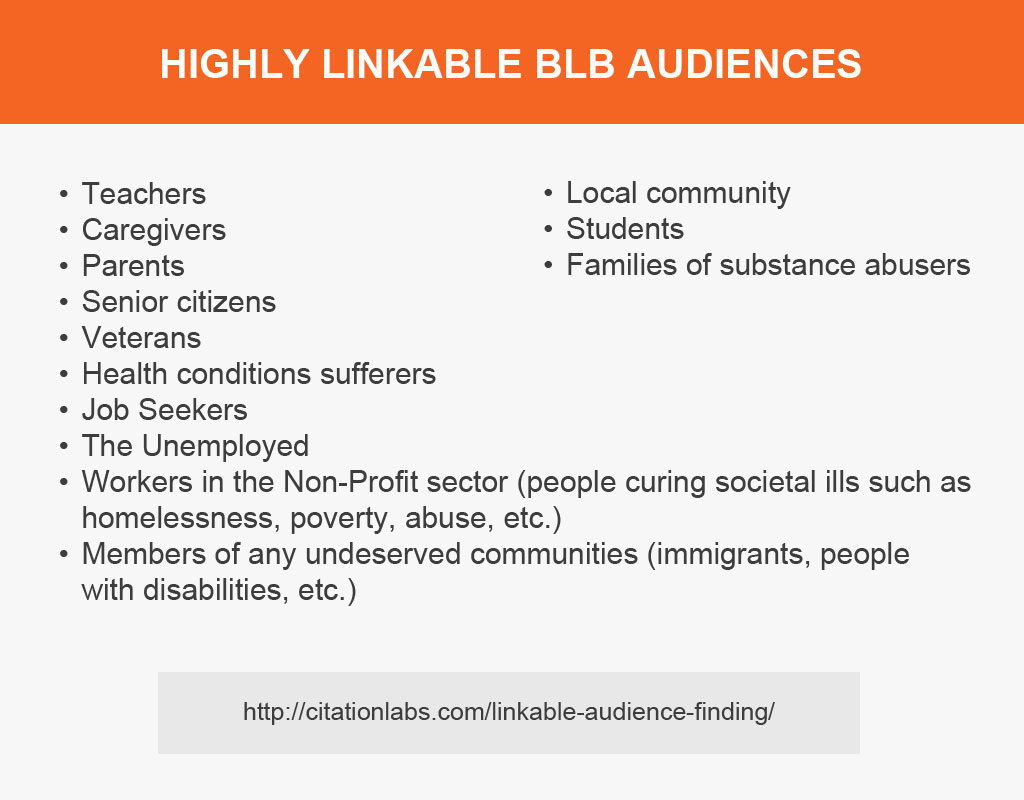
You may want to check this video by Peng Joon to help you with gaining more clarity with systems using Trello.
2. Schedule Content Onto Your Calendar
Procrastination is one of the biggest barriers to getting things done.
One way to break this barrier is by scheduling your activities.
What you only have to do is to follow your schedules and stick to it no matter what.
The same goes when you want to create consistent content for your business. If you want to beat procrastinating publishing content every week, you have to schedule content on your calendar.
By doing so, you design a specific day and time just for a content creation activity.
You can chop your content creation process the four parts:
- Ideation
- Drafting (Content Writing)
- Proofreading
- Designing
- Publishing
You can add more steps to the process that you think fits better to your own context as a content manager, content creator, entrepreneur, or agency owner.
You can schedule each of the activities above in a day and time (e.g. Ideation on Monday 9AM). By having a specific routine every week just for a task, you semi-automate the entire planning stage — as you don't have to think about what to do next once you're done with the first activity.
That's how powerful scheduling is.
3. Seek for Others' Deadlines To Get It Done Quickly
Accountability is a key factor to remain consistent in what you are doing. By allowing people to supervise you or lean on their own set of deadlines, you don't allow yourself to procrastinate activities.
When working with editors, proofreaders, graphic designers, or outsourcing writers, it's important to set deadlines for each activity or campaign.
By doing so, you begin with the end in mind.
Don't let any step overlooked or unexecuted properly.
4. Simplify Through Batching
Systems, scheduling, and seeking other people's help and deadlines help you create consistent and sustainable evergreen content for your business.
Another thing you want to do is simplifying it more through batching.
What is batching?
Batching is the act of grouping tasks together, so you do them all at once, instead of switching between tasks that take place in different programs or areas.
Instead of you switching your focus and trying to regain it when you get distracted, you batch group all similar tasks in a specific day and time.
Instead of you scheduling ideation of topics for 5 campaigns on different days of the week, you simply schedule all the ideation tasks on Monday (for example).
By doing so, you achieve what Cal Newport says as, "Deep Work" where you perform a state of distraction-free concentration that gives your efforts and skills a new level and value.
Result Takes Time
Don't expect immediate results when you systematize your process, schedule content on your calendar, seek for other people's help and deadline, and simplify things through batching.
However, when you do these things to create consistent content, you achieve progress and compounding results in your business.
Get to your vision straight.
Improve your habits through consistent efforts.
How to Use Empathy in Outreach
What if you can generate more links by getting into the skin of your link prospects?
That's how empathy works, doesn't it?
If you can use empathy in your outreach, you'll increase your response and link conversion rates dramatically.
In this post, we'll cover actionable tips to integrate empathy in your outreach copies.

Empathy in its original context is "in the skin" — which we derived this common knowledge of "putting yourself in the person's place or shoes".
How to Use Empathy in Outreach
The first tip to be more empathetic in outreach is:
1. Know what your audience's day looks like
If you're setting up an outreach campaign to a segmented audience (ethnos of people with the same interests, knowledge, or background), what you should be looking for are things that make them tick.
The way to do that is to understand their patterns of thinking and what they're going through like a normal person.
How can you know what a person's day looks like without having to face their experiences yourself?
The key is what I call, "a day in the life" hack.
The way to get started with this is to do a Google search for "a day in the life" + "audience".
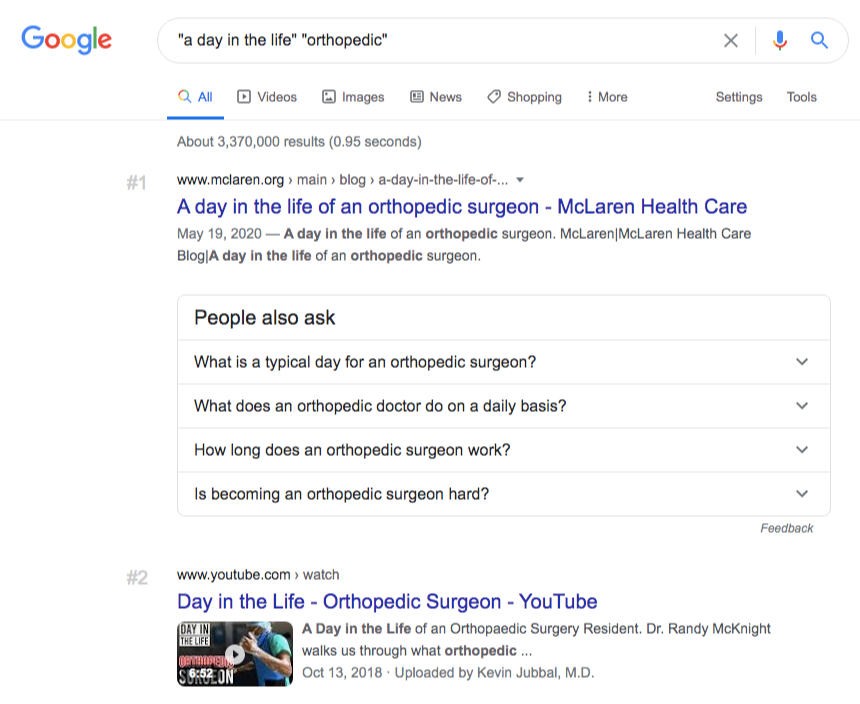
For example, you're promoting an infographic to a group of parent bloggers. You can replace the search query with "parents" to see what does parents' day looks like.
The less knowledgeable you are about a target group of people, the more effective this research hack is.
What if you'll pitch to web designers? How about chiropractors?
The list goes on and on.
So if you're an agency, you can literally utilize this "a day in the life" hack to know how your audience thinks and use it to craft a targeted email outreach with finesse.
Terminologies and lingos
When you do a research on the "day in the life" of "audience", you'll see different lingos and terminologies used by the person representing the group you're targeting.
Get insights from the different videos, essay-like blog posts, and other content formats as these are words you can directly insert in your email copies.

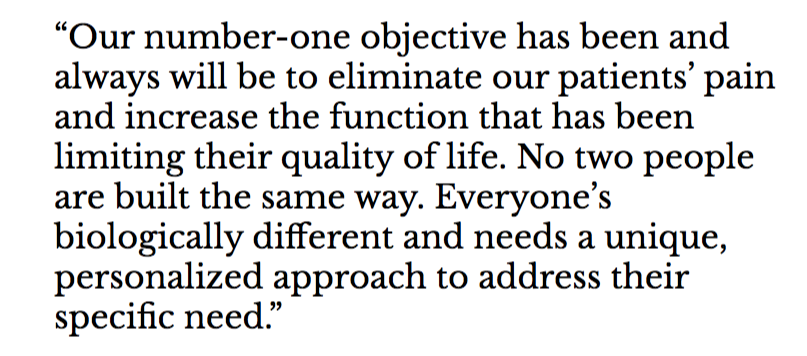
Content promotion lines
Many marketers throw lines like, "this content can you help you out…", "this useful content piece" or "interested in seeing this ultimate, great guide". — without even describing how the audience would resonate with the content.
Your initial pitch can stand out among all promoters of similar content to a group of an audience when you know how to describe your offer in a way that touches the person's day to day experiences.
2. Respect the prospect's time
Have you ever received multiple repeated follow-up emails within a few days?
How does it feel?
Chances are, even if you want to, you won't take the time to reply to the email anymore.
Follow-up emails should be done in a subtle and appropriate manner.
After no response, you should know how to send a follow-up email that is considerate to the person's time.
Not every silent response means the person doesn't care about your email. There are many various reasons why the person didn't take the time to respond to you — it could be their day job, or as simple as they had just overlooked it.
Putting empathy into consideration here.
Have a proper interval of follow-up emails to ensure you're not being overly aggressive, but at the same time, not missing out on the opportunity you couldn't get a link from the conversation, due to lack of follow-up.
Here's a good follow up email I sent to my leads that could be tweaked for link building outreach:
Hi [Name],
I haven’t heard back from you, and that tells me one of three things:
1) You’re not interested at this time, but we can work out something in the future.
2) You’re still interested, but haven’t had the time to get back to me yet.
3) You saw our content but you think it’s not fit to add to your page.
Please let me know which one it is, because I’m starting to worry. If you have other reasons, please let me know so I can stop bothering you.
Thanks and looking forward to hearing from you.
[Your Name]
3. Anticipate objections to solve problems beforehand
You can use sales psychology to determine what would be the possible objections of your link prospects, even before you actually pitch them.

By doing so, you're now looking for elements to add to your email copy that makes it irresistible.
There are three objections that a person can have whether that is an offer or a link request.
Vehicle, internal, and external objections.
Vehicle objections are types of objections a person has on the platform, tool, product, or offer.
Link building-wise, your offer is your content asset.
You have to identify common objections with your content asset.
Here are some examples:
- Exclusivity of your content. If you're doing digital PR, you want a few targeted local & national newspapers to cover your story or content before it actually goes out in public. If you could prove that your story is exclusively offered to them, you're likely to have a chance of getting the exposure.
- Ready to publish content asset. If you're distributing a blog post or an infographic to publishers, you would want to make it easily accessible or easy to find.
- Credibility of your content piece. If you've got early wins with media sites and top industry blogs, you could highlight it as part of your pitch — making your distributed content irresistible to be published on their blogs.
Internal objections are objections they have on themselves. This refers to their limiting beliefs that lead to not taking your favor.
External objections refer to any objections people have not using the vehicle (i.e. not using your content asset). This could be summarized as some sorts of "excuses".
What are the excuses potential linkers for not giving you links?
One example in broken link building outreach is the inability of a person to find the broken link.
In this case, to remove the roadblock of that objection, in your conversation leading to link placement, give the person details of broken links (URLs and their anchor texts).
I’m happy to send them over. The ones I encountered were here ([Linking From]):
- [Broken Link #1]
- [Broken Link #2]
- [Broken Link #3]
Hope that helps. Also, is there any chance I could make a quick suggestion? *CRAFT CUSTOM FROM HERE*
Knowing the objections of your potential linkers beforehand leads to increasing the success rates of your outreach campaign.
Here are more useful resources on this subject of email outreach:
- Outreach Strategies During the Coronavirus
- Why and How Influencer Outreach Works
- What To Consider When Using Branded Email Addresses For Client Outreach?
- How to Use VoilaNorbert For Linker Outreach
Skin in the Game
If you put your skin in the game, you literally get your hands dirty. You have to know who your link prospects are as well as their needs to be able to serve them properly.
Comment down below if you have any additional insights or tips you'd like to share with our audience.
Vetting Prospects At Scale
What if you can have a list of factors to look at when vetting link prospects?
In that case, you don't have to wonder whether a blog is worth reaching out to or not.
In today's blog post, let's cover these quantifiable and qualitative factors when vetting prospects at scale.

Before anything else, vetting backlink prospects on a manual approach is a good practice.
While you can use different tools to check the website's Moz DA, Ahrefs DR/PA, and other link-based metrics, using your eyes to assess websites' quality for links is still a major difference-maker in how your campaign works out.
For major enterprises (big brand link building campaigns), they typically have standards set up already.
As a link building agency that does link building at scale, we follow certain guidelines that align with their brand requirements as well as anchored to what we believe are quality metrics as a content-based link building company.
But for the majority of websites, people are stuck as to what factors to consider when vetting prospects either for guest blogging or resource page link building campaigns.
What you'll see in the list below are some mostly applicable for blog vetting, meaning you're looking for them as content partners. Some could practically be applied to other types of link development campaigns, such as broken link building and link reclamation.
Let's get started with the list.
Considerable Factors When Vetting Prospects At Scale
1. Post Recency
This one is pretty basic. If the blog you're vetting hasn't posted in, like, three to six months, you're less likely to have a chance receiving a link, an email response — more so.
Simply look at the blog section of the site and see its posting date for recently published articles.
2. Brand Size
When doing link search campaigns, you get different sizes of websites. Mostly you'll get some really large brands.
Simply match it to what your brand can offer. Unless your content team has a solid comprehensive asset to offer to a huge brand, which in reality, has several editorial steps, you're less likely to acquire an editorial link.
Large brands have link development teams working on their own content. They would be willing to get a partner with your site for content partnership if you could offer high value well to them in terms of content assets.
3. Websites with traffic
A lot of SEOs and outreach teams rely too much on link-based metrics, without even checking the site's estimated organic traffic.
If the site has high traffic potential, you wouldn't just get a no-value link, but a contextual link with potential to drive referral traffic and assisted conversions to your blog.
You also want to look at the quality of the traffic and not just the numbers.
So, if you're building links for an eCommerce site that primarily targets the US, it's not natural to have tons of links from sites whose primary traffic region is India, Pakistan, Australia, instead of your own site's target region.
You can use Ahrefs to quickly check the % of traffic by country of your vetted website.
4. Without Major Traffic Drops
Websites with significant traffic drops can be as a result of an algorithmic or a manual penalty. While we can't figure out which of the two is the major reason, unless we have the data ourselves, it is best to avoid such sites to be on the safer side.
You can use SEMRush or Ahrefs to check the website's traffic, and simply look at if it has major traffic drop/s.
5. Types of External Referential Links
What you are looking at here is the site's external links — preferably those ones that they use to refer the reader to another resource or article for more details or information about the topic they cover.
Let's say, you are vetting blogs for content partnerships. You want to know if the blog is externally linking to other content sources (e.g. blogs). If the site is linking externally, but it's only to .gov sites, it won't necessarily be a good fit for your targeted link development campaign.
That's the other way around if you're pursuing resources pages for a broken link building campaign. Resource pages from a lot of these sites have some external links to .gov and .edu sites. This could still make sense for your brand if you're doing some kind of academic type of content.
If a blog has written for us or contributor's page, it is a clear sign they accept content contributors. That is a good or bad signal if you ask me. A good sign if you're taking guest posting campaign, as you would want to see if a blog accepts outside contributors.
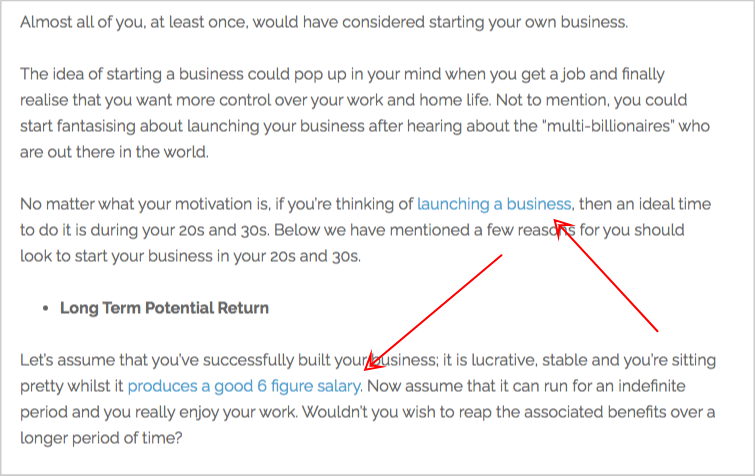
However, it's a negative sign if most of their blog posts are guest posts and there is not much original content of their own.
So, check how the blog's external linking practice to help you decide for yourself what would work as a good link prospect.
6. Irrelevant Content Partners
The dilemma for most link builders and SEOs trying to hit their number of links per month is they settle for sites that link to any irrelevant content partners (guest posts on entirely irrelevant topics).
Since they don't know how many websites they should be looking for and aren't capable enough to do the necessary analysis for vetting link prospects, they ended up having guest post links from completely different niche.
If you're vetting a niche site, but you spot many irrelevant posts from different niches, it's a clear negative sign you have to consider.
7. Site's Natural Link Acquisition
A highly valued vetted site is a site that could drive your referral traffic and potentially helps your brand to be more visible to other relevant linkers. This is the site's natural link acquisition capacity.
You basically want to know if the site is capable of attracting new links every now and then.
The best way to identify this site's specific ability is to use Ahrefs Site Explorer. Go to "Best by Links" under pages. Set the HTTP code as "200 ok" to only view live sites and sort the results by the number of referring domains.

This gives you an idea that their pages are capable of acquiring natural links from relevant blogs. You can take a deeper look at their best page and see what type of link they acquired.
Of course, there isn't a guarantee that your site gets natural links too, but you're now vetting on a site that has the potential to have it on your end.
Given that high-value content published on other sites will likely pick up some links in the process, either internally (from other related pages) or externally (from other linking relevant sites), you get more visibility from your contributed content.
8. Basic Design and Branding Check
If you're qualifying link prospects at scale, you could easily see some patterns when checking for quality.
Part of that is the basic design and branding of the site. You only have to ask the question, does the site use a typical free WordPress theme or they have invested in good design and branding?
How's their design theme? Are they mostly using stock photos?
If you're doing an enterprise link building campaign, no questions asked if you have seen sites without impressive design. They don't have to be pretty clever in design but must be above average than most free designed blogs.
You can't judge easily a site's traffic potential based on its current design. See this website for an example. There's nothing astounding with the design, but they get so much traffic.
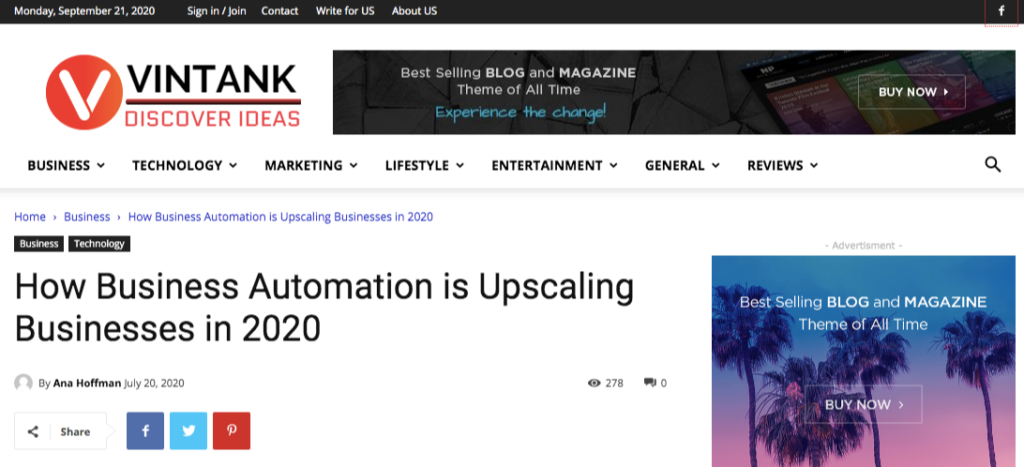
Nonetheless, as you master link qualification, you'll get a good feel of what makes a site good in quality simply by checking its design and branding.
9. Shady Outgoing Links
If you want to be more meticulous with your link qualification process, you can go to Ahrefs Site Explorer and head over to Linked Domains under Outgoing Links. Filter the results by "dofollow" and sort by "first seen".
You'll get a list of the most recent dofollowed linked domains from your vetted website.
Preferably, unless you're into these niches, you want to avoid sites that link to adult, gambling, pharma, and other questionable sites. No matter how good their link-based metrics are, you're going to get a problem getting links from them.
Experience Matters
It takes a lot of time and experience before you or your link builders could master the art of link qualification. As they involve themselves much in vetting sites at scale, they get to be more efficient in doing so, and thus, help your campaign reach more links in the results.
Hitting Your Number of Acquired Links Per Month
Setting a goal for every campaign is a critical success factor.
Without goal setting, you'll find yourself losing resources without hitting your target objectives at the end of the campaign.
In link building, most SEOs would like to hit a certain number of acquired links per month.
Is it a numbers game or are there other factors we have to consider?
In this blog post, let's discuss these considerations and dive into what really matters.
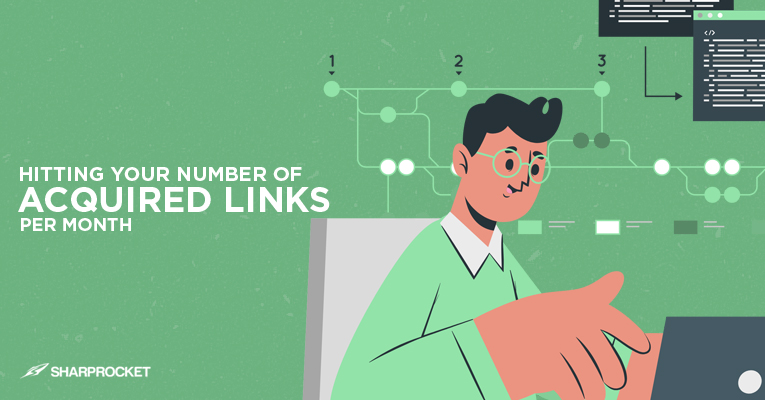
Let's face reality. If you're dealing with clients for their link building projects, they often have a target number of links to hit every month.
This isn’t because it's just a numbers game, but because they've analyzed enough their backlink profile against their competitors. This is where marketers, SEOs, and link builders should start.
There are two ways to do this.
The first is to analyze your own backlink profile specifically its link velocity. Compare your growth month over month, or year over year.
You should have seen good consistent growth in terms of unique referring domains — these means people are attracted to your site and are linking to your pages both organically and manually (manually — you building links through link request or content promotion outreach).
If your site is new, you shouldn't expect much growth in terms of links. But if you've properly published linkable content assets, you should assume the momentum of links over time.
The second analysis that you can do is to look at your competitors' profiles. These are competitors competing with you on products/services you're also providing (and not competing for just content piece or page).
How many links are they getting passively each month? Ahrefs gives you a lot of insights into this.
Using the analysis of your site/client and its competitors, you should have a good sense of how many links you should be building and their range of authorities depending on the niche you're in.
Factors To Consider For Number of Acquired Links Per Month
Brand Requirements
If you're working on an enterprise link building campaign, head of SEOs or SEO managers have their own target number of links to acquire each month.
It could be based on their own analysis and decision making.
These types of websites with solid content teams have dedicated content hubs on their site ready to be promoted to its intended audience.
That being said, you may be working for just one content piece or set of content assets. This setup provides easy insights as to the supposedly hit link numbers.
Simply look at its content competitors (primarily competing pages on search results for its main/target keywords).
Using Ahrefs' Link Explorer, you can quickly see the number of referring links each page received.

From that, you can set a good range of target links to acquire each month.
Take note that you have to consider factors such as the competitors' brand authority, its post publishing existence (if they're the first one who covers the topic - they're likely to get initial benefits of trust and visibility), plus all other factors competitors have an advantage when they created their content assets.
Scope of Target Industries
Your target industries will play an important factor to the number of target links you want to acquire each month.
The more expandable you can be with your target audiences, the more number of links you can tap.
However, it depends on what kinds of links you want. If you're aiming for resource pages links, your target links depend on your intended linkable audiences. You can check out these two guides on resource pages and broken link building.
The bigger the scope of your audience targeting, the higher the number of acquired links you can target.
This doesn't mean you have to expand your target audiences because this will sometimes detach you from your brand's customer base.
Always check if it's feasible to expand your target audiences.
Linking Velocities of Competitors
Search marketing is a serious competition.
If the competition thrives at increasing the quantity and quality of links every month, it would be best to cope up with their speed and velocity.
You don't sacrifice quality here, but rather find ways to increase the types of links that matter to your site.
You can use Ahrefs to see your competitors' link velocity status.
Prospecting Lists
The larger your prospect lists, the more likely you'll get more links in your link development campaign.
You should also account for other factors such as the effectiveness of outreach pitches, response times of prospects, seasonality of campaigns, and all connected factors to link results.
That being said, when you increase your prospecting lists while at the same factor in good efforts to other contributing success factors of the campaign, you can expect a higher number of acquired links per month.
Find flexibility for websites you can reach out to. Are there any other industries or types of linkers you can tap with for content promotion?
Expand your link search capabilities.
You can use tools like Citation Labs Link Prospector to semi-automate link prospecting.
Actionable Tips to Increase the Number of Acquired Links Per Month
Uncovering Passive Link Opportunities
Link acquisition can work passively. By investing effort in the promotion of solid content assets for initial links, those pages become more visible to other linkers either through dominating the search results for its target keywords and/or getting radar on mentions in targeted publications.
Find any old evergreen content assets that are underpromoted, yet have acquired a significant number of high-quality links in the past.
Make it more comprehensive than its previous version by adding more latest data, new content formats to suffice other learnings styles (such as videos, images, infographics, etc..).
You can check out these resources on creating link assets in boring niches and link building for SaaS template pages.
Use Ahrefs' Top Pages and sort by Best Links to find your site's top linkable assets.

By doing so, you're not only relying on your manual link building outreach, but you're also consistently gaining new passive links that are relevant to your brand.
Invest in organic link generation to get ahead with your monthly target links.
You can check out this latest podcast by Siegemedia on generating passive links.
Links as a Leading Indicator of Success
For SEOs and agencies, the lagging indicators are search traffic and rankings.
Links become just a by-product of pushing efforts to hit those lag measures. Links, for them, is a leading indicator.
This is an important mindset to hit your number of acquired links each month. You may opt for the number of links but later on not be able to achieve your lagging indicators.
If you're building content assets from a search traffic improvement perspective, you get high-quality links along the process.
Factors and Processes
By knowing what matters most to your link building campaign and leveraging on processes — both major and menial initiatives – you're likely to hit your number of acquired links per month.
Link Building Approaches For New Campaigns
Someone handed you over a website to start a link building campaign. Unsure of what to do, you do a Google search for how to start link building.
A bunch of articles pop up and give you tips. Almost all of which say the same topic.
Different approaches. Different link building strategies. Now the question, where will you start?
In today's article, I'll share with you tips on what to do when a client comes if you're working for an agency, or when you've just decided to build links for your new business site.
Understanding Resource Allocation and Scope of Work
Link building is a piece of the pie in the entire business project. It isn't a compartmentalized business activity.
Instead, it requires that you also look at other parts of SEO — technical side, for example, to gauge whether the client's site is ready for some link building engagements.
Essentially, you don't want to jump right in to link acquisition without the technical set up properly. It's not a rule, but it helps you see more results and developments from your link building, if your foundation is solid.
What is your scope of work?
Entering into a new link building campaign, you have to know the extent of your work. Are you just working to build links to specific pages or you can get links to different pages of the site?
This is true for big brands that have solid content assets and are now hiring link builders or agencies to come up with efforts for content promotion.
The scope of work for most enterprise link building campaigns are geared towards specific pages they're looking to rank for or have had positive secondary efforts on their conversions (mostly top of the funnel or middle-of-the-funnel driving pages).
If you have a very targeted link building campaign (either for 1 big content asset), you have the advantage of gaining and allocating your resources effectively.
One-time off project or long-term campaign?
As an agency that provides link building services to SEO agencies, we get clients looking for a one-time off project. It's understandable they've had a tight budget, but it is more advantageous that they take a long-term mindset in link development.
Don't just take my word, see how Ross Hudgens point this out.
What are your available resources?
Link building requires a team. If you think you can be a solo link builder for life, you can, but it would consume more resources than you'd have otherwise expected.
Depending on the size of your brand and your allocated marketing budget for search, you must have a good rundown of your resources. This includes your manpower — content writers, web designers/developers, outreach specialists/link prospectors — all are working together to attract and manually build links to pages.
If you're a link building agency, you'd want to know if the brand has partnered up with other link dev agencies. You would want to get an idea of the types of links they're focusing on and their targeted pages for links.
Starting with Content Inventory
When approaching a new link building campaign, it is vital to have a good content audit.
Not all new link building campaigns mean that there isn't any content piece created in the past. It would have been a new project for you, but there are certain solid content pieces that have been published before.
Content audit of the site
So start looking for underpromoted content assets on your website, but has the potential to earn and gain new inbound links today. You can use Ahrefs to find pages that have gained a considerable amount of links (a few .edu links here and there), yet wasn't pushed enough for more acquisition.
Reverse engineer competitors' content
Knowing how your competitors generate content ideas and do outreach campaigns (even in this new normal season) can give you insights to forge your link development campaigns.
One, in particular, you have to look at is if they've gotten high-level domain links such as.edu links.
Using any link analysis tools like Ahrefs, you can quickly check if they've launched a specific program that attracts middle schooler pages or local colleges to link to them naturally.
The type of content and its unique value proposition matters how they've performed well in link acquisition.
Another insight to look at is the ability of the brand to get recurring links from the same domains. In Ahrefs, there is an option to filter and see domains with its different pages linking to the brand.
The discovery shows the perceivable value of the site or a specific content — turning it into a link bait authority site.
Discovering Targeted Link Building Tactics
New campaigns will unpack link building tactics suited for the brand, given its industry, available resources, and past histories of link dev campaigns.
This makes link building fun and exciting, as you'll have to strategize a customized campaign for the website.
We've mentioned earlier deciphering the link strategies of competitors by looking at how they've gotten links in the past.
Another thing you have to consider is the range of domain level/authority of sites linking to them.
For example, in a tight niche, your competitors may only be getting links from DA10 to DA40 sites. Does that mean they're low-level link builders? Of course not, the industry may only have a few niche blogs to reach out, but getting links from these content creators are likely to impact the site's performance — given the topical relevance of those linking domains.
Having a good grasp of authority levels of linking websites will help you set a benchmark of domain levels for your new link building campaign.
idiosyncrasies of Tactics
When embarking on a new link dev campaign, here are certain unusual activities associated with common link building tactics we know of today.
A few examples are:
- Finding unlinked mentions when the brand is not a common word (unlinked brand mentions)
- Using branded email addresses for broken link building outreach (broken link building)
Elements that are only identified once you start a new campaign must be well documented to be able to turn them into a written process. This gives you the advantage of scaling small activities that could have a significant impact on your link building performance.
Suitable Content-driven Tips
When you have the bandwidth to try and test new content-driven techniques for your new campaign, don't hesitate to do so.
For example, you can launch a data-driven campaign to attract any national or international press — debunking the myth that only big brands can execute this.
With an artistic approach to creation, adding visual graphic designs, and research-backed content combined with highly custom pitching to publishers, you can get initial results other older established competitors can be hard to replicate.
Focus On What Matters
You can be quick to implementing results right off the bat. It's good to implement some processes you've managed to document for your past link building campaigns. But it is still better to customize campaigns for specific industries based on their context, objectives, and resources.
Knowing what truly matters for the brand helps in launching your new link building campaign.
How to Use Influence to Build More Links
A person with influence gets more opportunities than someone without. It's a reality most content marketers must embrace as they try to build content authority and influence through content marketing and link building.
Knowing how to use your sphere of influence has its given advantage in link acquisition. You earn hard-to-replicate links, repeated links from the same trusted domain or website, and even increase the exposure of your top or middle of the funnel content assets.
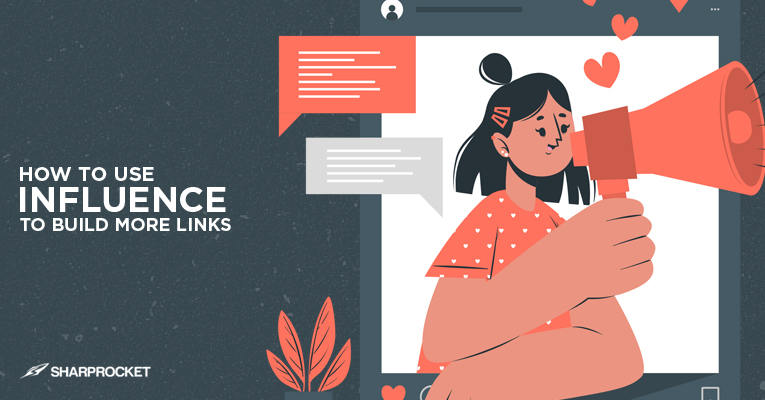
In this post, we'll cover tips on how you can use a sphere of influence to build more links to your website.
How to Use Sphere of Influence to Build More Links
1. Use seed planting strategy
A subtle approach in building your influence works pretty well in establishing trust without the need to invest a huge amount of resources — whether that's financial or time-intensive resources.
The key is to look for groups of people to whom you'll be adding value on a regular basis.
You're not looking for a massive group of audience, but a small targeted group who has the potential to amplify your brand content assets.
Discover your target group of amplifiers. You can check out this latest guide by Rand Fishkin to learn how to discover small invite-only amplifier groups.
You can also create your own list by finding small to medium-sized blogs in your niche using Buzzsumo.
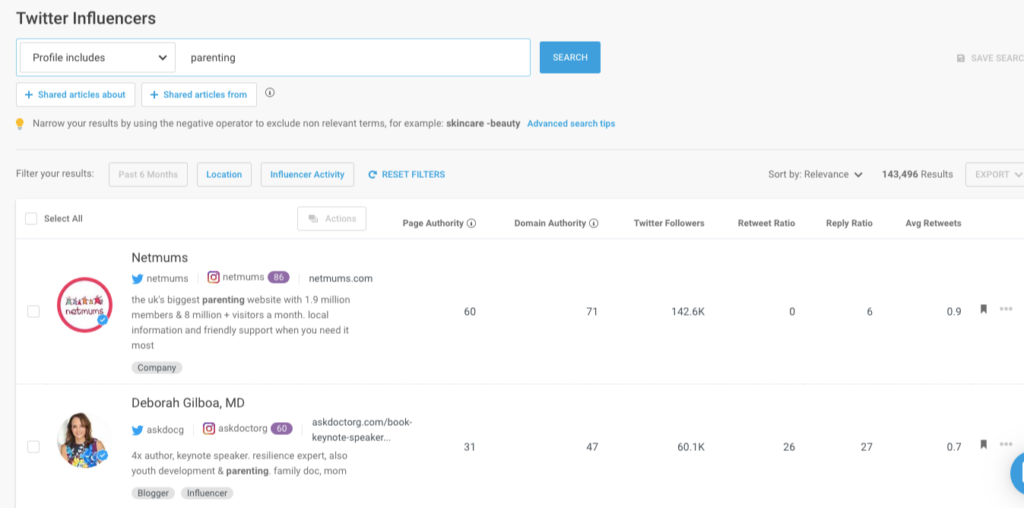
It is best to get radar of their latest posts by subscribing to their email newsletters or blog RSS feeds. This would get you notified of their new posts.
This is where the seed planting approach takes time. As soon as their new posts are published, be the first to comment.
Always add value to the conversation, perhaps ask a question. Don't just add any link to your content in your comment, unless it's relevant to the content you're commenting on.
In most cases, you use your name as anchor text to a link of your website — a standard approach on blog platforms.
Another seed planting technique is to share the latest content of your target content amplifiers. Get on their latest tweets and only share if it's relevant to your brand. Otherwise, you may come off as robotic and automated in sharing their stuff.
2. Engage in channel-specific groups
Besides creating your small list of content amplifiers that you'll engage in for further connections, you may also find specific channels where your target customers or content audiences engage in.
Here are some channel-specific groups you can consider:
- private Facebook groups
- private Slack groups
- Linkedin groups
- industry-specific websites (Growth Hackers)
- niche-relevant forums (Traffic Think Tank)
- private Skype conversations (invites only)
While not all of these you can't penetrate quickly, if you can find a few private groups where you can invest heavily in conversations, those are gems with a high return on investments.
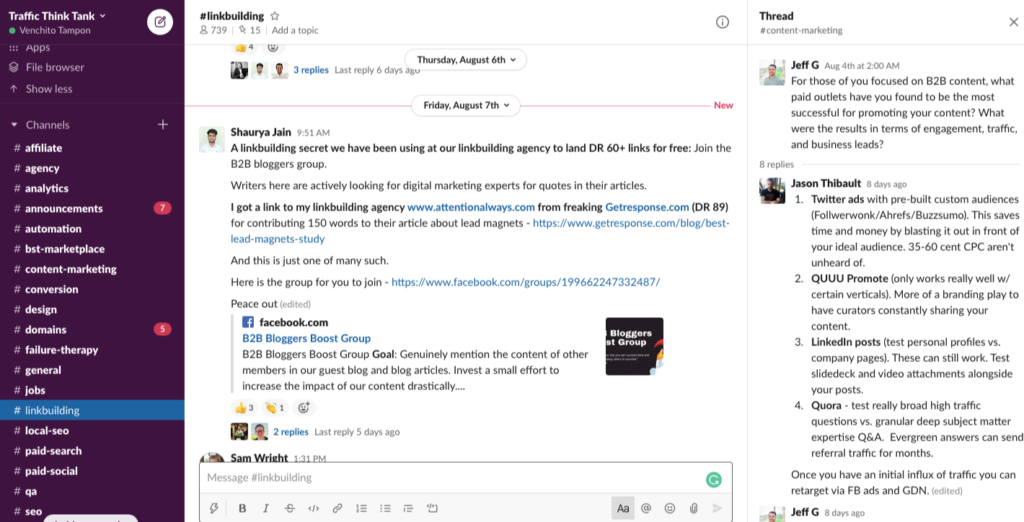
Getting into channel-specific groups has other content marketing benefits besides getting organic links. These benefits include:
- Generate new content ideas that are timely for the current business season
- Develop outreach strategies in the new normal based on engagement patterns to increase response and conversion rates
- Add more leads in your sales funnel through interested customers or clients of your services (driven by their perceived value on your engagement)
If you can look for channel-specific groups, you can engage better with your audience in a more personal, relatable approach. Thus, helping you build your brand and earn authority links.
3. Leverage LinkedIn as a subtle connector tool
LinkedIn shouldn't be a platform to spam people with straight right hook offerings (products/services).
There is a way to build relationships the right way, and at the same do link building without the need to annoy people with insensitive, non-personable messages.
Start optimizing your profile. The key is not just to introduce yourself in one message with lengthy profile credentials.
If you can provide enough details and descriptions in your profile about what you do for a living, you'll have better chances of getting more profile views. This can lead to more opportunities for connections and natural links in the process.
In addition, create a content plan for a month and have it scheduled to post for the best times every week.
You may opt to follow your existing content calendar or have a separate strategy just for LinkedIn posting.
By promoting your content assets natively on the platform, you'll have better chances of engagements, and an increase in organic reach.
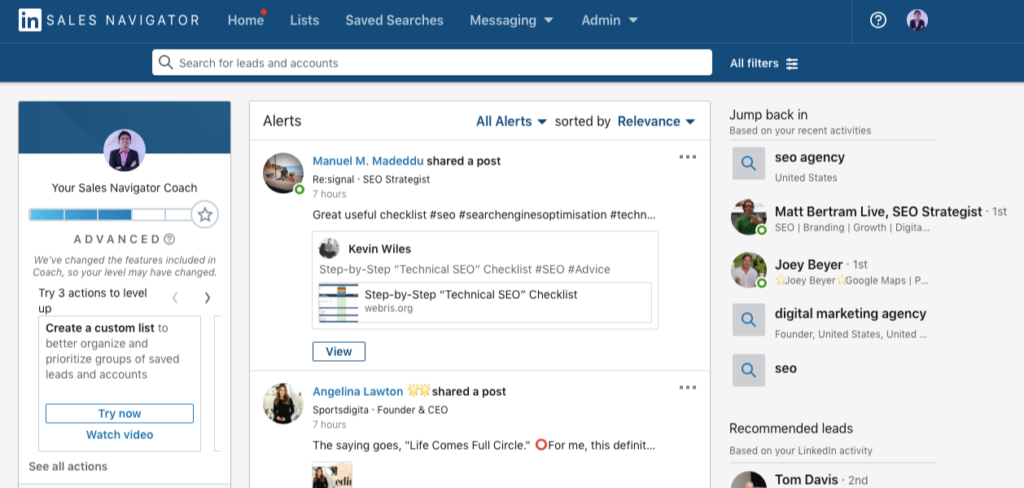
It is best to use the Linkedin premium account, particularly Sales Linkedin Navigator to maximize sending off invitations to target people. This gives you more capacity to add more like-minded influencers in your circles.
Enterprise sites can leverage Linkedin as a way to personalize their approach in connecting with their potential customers — strengthening their brands and acquiring new enterprise links.
4. Maximize attraction marketing
Influence has its advantage to attract high quality backlinks.
With the idea of marketing flywheel, you create more visibility by developing content resources that appeal to your target audience.
With organic and manual link building and content promotion, you reap your initial benefits of links, social shares, and other engagement signals. This gives you the opportunity to get more flywheel effect for your content.
Here are some ways to apply attraction marketing:
- Produce lead magnets such as checklists, top lists, and coupons — to capture email addresses, which would have an increased possibility of visibility for your future content assets.
- Develop comprehensive evergreen pages on your site that match your audience's needs (may it be a linkable audience you've chosen or a target group of influencers).
- Create timely content to attract new content consumers to your site. You can check out this guide on content marketing strategies during coronavirus.
Be A Value-Adding Influencer
Influence has its responsibility of putting people first. With this kind of mindset, you enable yourself to become a forceable brand that engages people with value-adding content assets.
How to Generate Content Ideas in the New Normal
We content marketers and SEOs have to adjust to the way we plan out content for the next coming months.
As we become more flexible in other business functions, content marketing is something to be taken care of seriously to address the changing needs of online users.
The new and old problems brought by this pandemic challenge many of our existing content strategies — whether in a form of content ideation, content creation, link building, or content promotion.
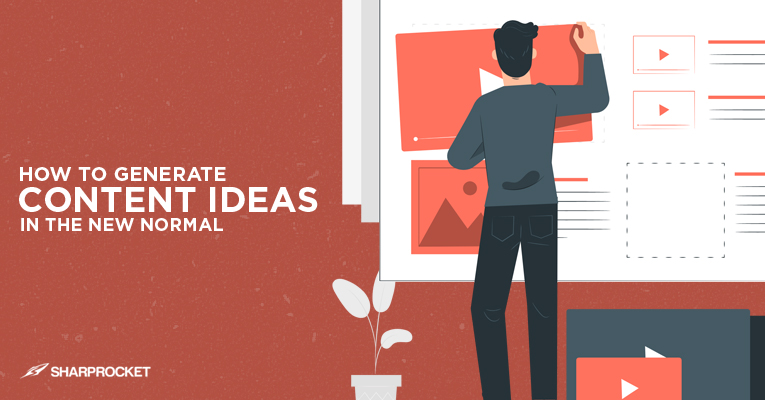
In today's post, we'll cover on just one phase of content marketing — content ideation. Let's learn how to generate content ideas in the new normal.
How to Generate Content ideas in the New Normal
1. Adjust Your Content's Keyword Strategy
There are keywords in your content calendar that can play out still in the new normal, but there are transitional keywords your searchers may be looking for that you'll have to create content about.
This means that you have to do some adjustments with your keyword strategy.
For example, you'll find that relying too much on prominent keyword data tools like SEMRush for transition keywords may not be effective to discover transitional keywords.
SEMRush may not cope up immediately in their data set key phrases that have had good search volume for the past 30 days.
You wouldn't get much value from it to find any coronavirus-related terms or any industry-related phrases that match that need of searchers in this season.
What you want to do is to use another tool - Google Trends, which can show you trending keywords for the past 30 days.

Go to the Related Queries section to find more related phrases for the keyword you are searching for.
Related Topics section will also give you an idea of content themes you can decide to generate content assets later on.
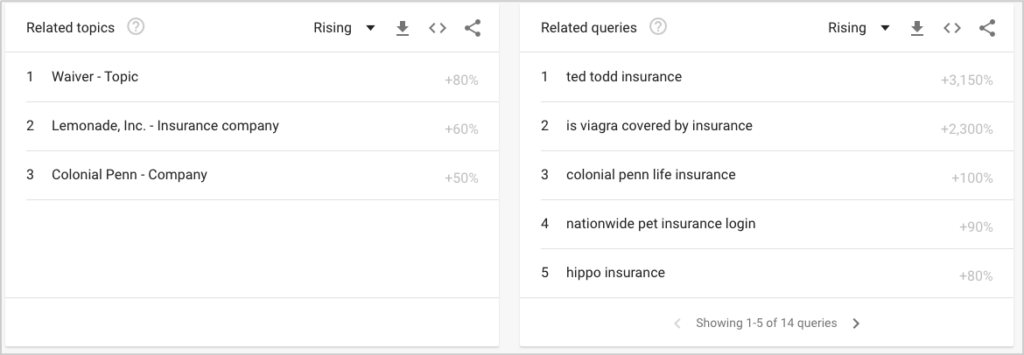
You may even consider the Coronavirus search trends available in Google Trends today. This gives you top questions asked for the past days and weeks.
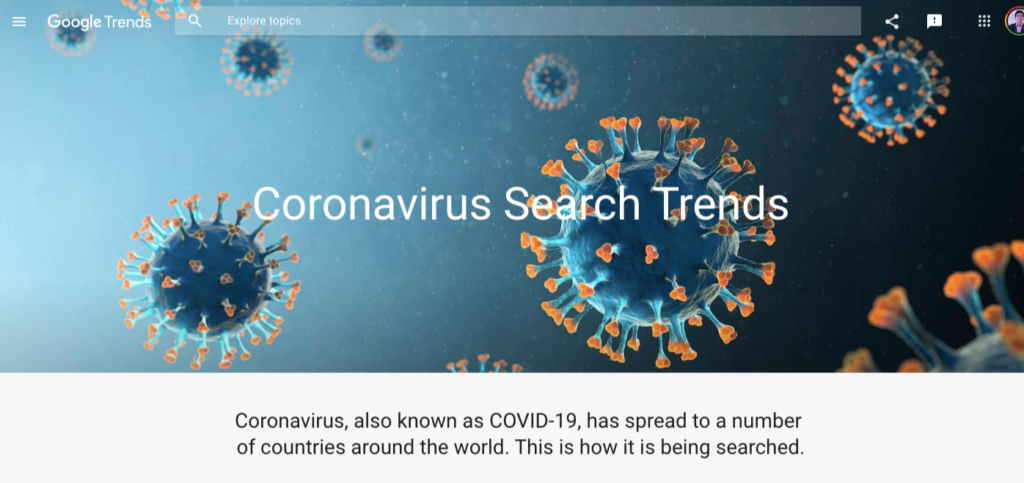
Once you have specific queries or keyphrases collected from Google Trends, you can use AlsoAsked to further find questions related to each key phrase.

These questions can be your ideas to consider for your blog posts.
2. Use Maslow's Hierarchy of Safety Needs
Creating content is serving the needs of its target audience.
In today's time, human needs don't change that much. There are only levels of needs that have been more emphasized and more to be taken care of as people go through tough times this pandemic season.
In Maslow's Hierarchy of Needs, people care still at self-actualization as the top-level need.
However, in the new normal, we can see safety as the much-needed topic to consider when creating any transitional content.
Safety needs can be broken down into more specific areas such as financial, emotional, physical, and social.
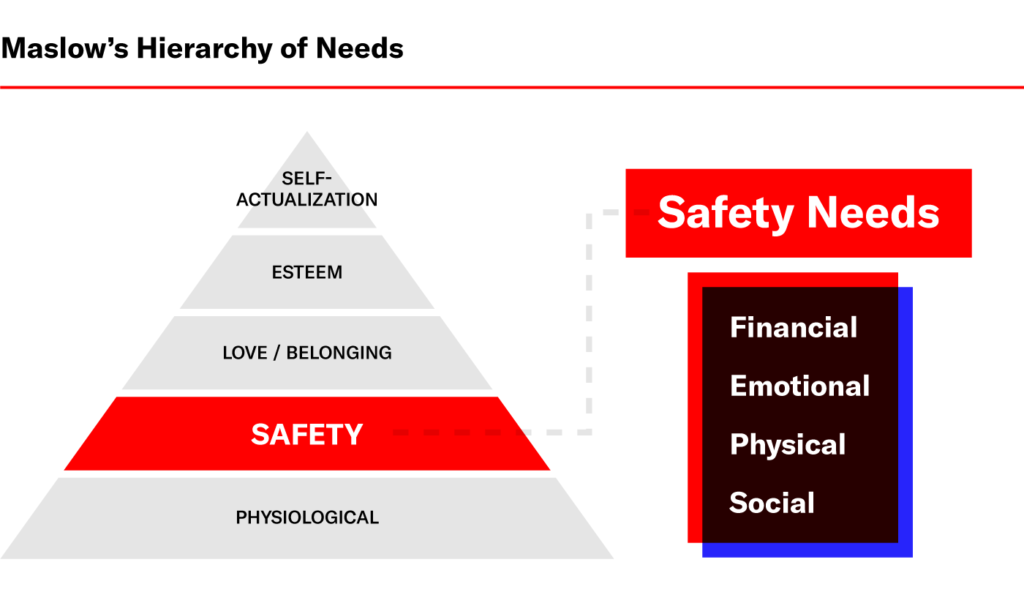
When generating content ideas for transition content, you can tie your already mapped out topics in your content calendar to any of the specific safety needs.
For physical safety, this means you'll look at any topic that may be related to staying clean and avoiding germs.
For financial safety, it could be helping people who've just been laid off from work and business owners who've been heavily affected by the crisis. Look for topics that help solve current money problems of people.
For emotional safety, content that revolves around managing stress, fear, anger, and any negative feelings people experience during tough times.
For social safety, start with content that deals with people's interaction through online platforms. Any keywords with remote or virtual may play out to be timely topics.
Match any discovered safety topics to Exploding Topics to see how trending they are at current times.
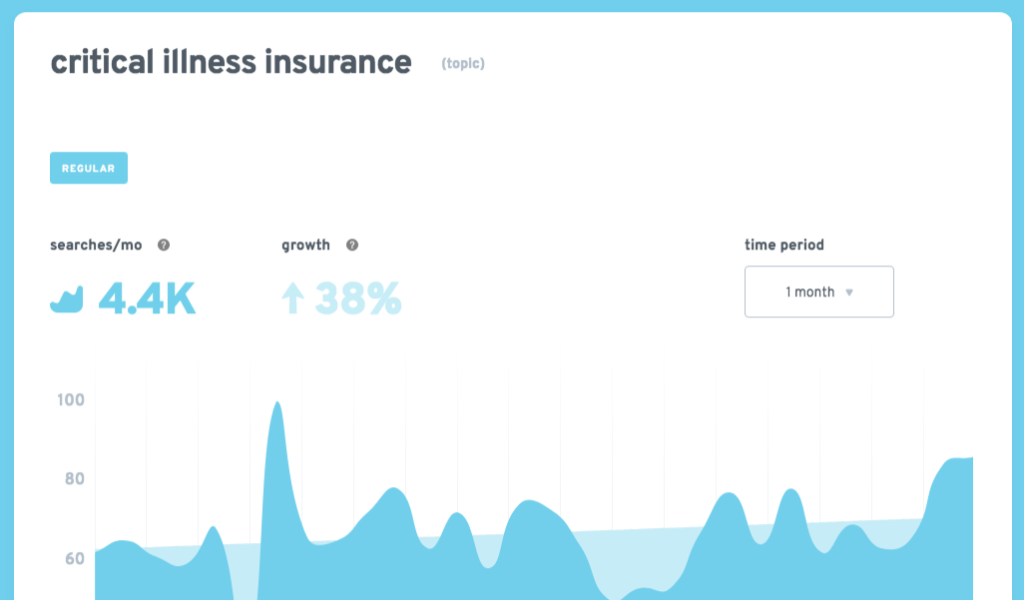
You may want to set up Google Alerts to track any mentions of the specific safety areas. This could give you list of recently published pages that can help you generate some content insights.
You may want to check out these two guides on finding unique blog ideas and creating link assets in boring niches.
3. Discover Recent Highly Social Engaged Content
Besides trending topics, you also want to look at content themes that gain social engagement for the past days and weeks.
This could be done well using Buzzsumo. Discover any industry topics that received traction on social media platforms.
Create transition content based on topics not only with high search intent but also with high social engagement — as this could run through well in getting traffic spikes for your blog.
If you are blogging for personal branding, using Buzzsumo to find socially engaged content gives you discovery on the latest authors and personalities who are active in pushing out content in this new normal.
Another tool that you can use to search for socially-engaged content is Reddit. We've written some guides here at SharpRocket to help you get started with Reddit.
4. Replicate Content Ideation Strategy from Content Hubs
Resource hubs have been dedicated to particular content themes and to specific audience needs.
In the new normal, you can consider creating your own hub of helpful resources for COVID-19.
You can add your latest solid content assets for COVID-19, which includes blog articles on safety concerns.
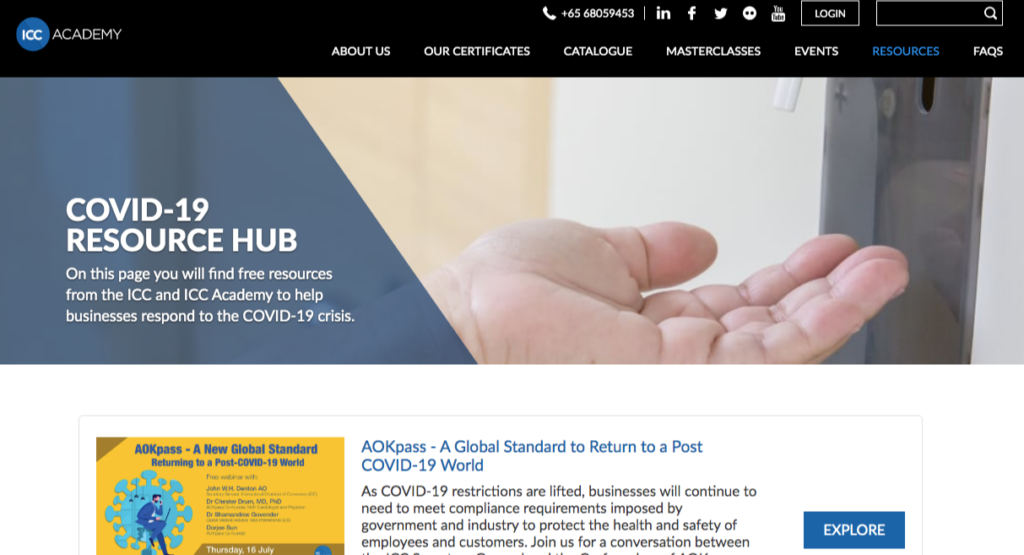
Even if it's just a curated list of existing content, as long as it is a good match for COVID-19, create a hub for them.
Be Flexible With Your Content Strategy
You may have a well-planned out strategy for this year, but what separates successful content marketers from a mediocre one is the ability to foresee changes needed to implement right away to better serve its intended audience.
Your mission as a brand is still the same, but the strategy must be flexible to address the needs of your users.
Let me know in the comment section any tips you may recommend to generate more content ideas in this new normal.
Outreach Strategies During the Coronavirus
COVID-19. This destructive virus has affected many businesses and individuals including SEOs and content marketers.
While we don't know when this will end, what we can do is to adjust our strategies based on the current situation.
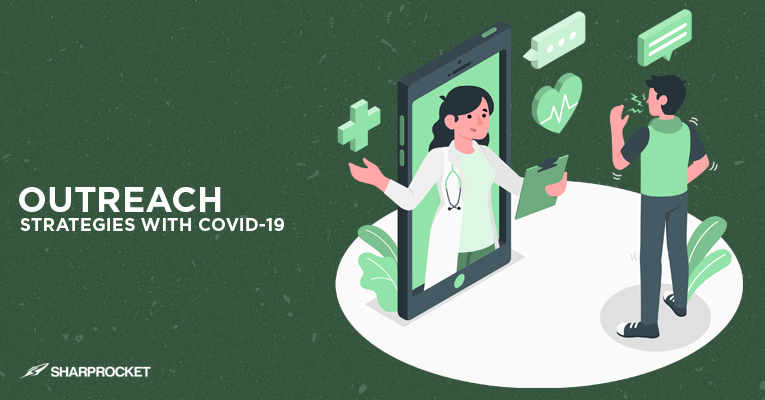
At SharpRocket, we launch different link building and content marketing campaigns and have seen the effects of COVID-19 on our link prospecting, outreach, and content creation initiatives.
Not all are major changes, but there are multiple elements that must be considered for links to go live for our clients during COVID-19.
Outreach Strategies During the Coronavirus
1. Be Sensitive
You can't do the same old style of sending spam uncustomized emails to your link prospects.—even having a templated email copy without even checking how your message resonates with your audience.
In this period when people are in doubt, disappointed, and are looking for some relief in their lives, the best email outreach strategy is sensitivity.
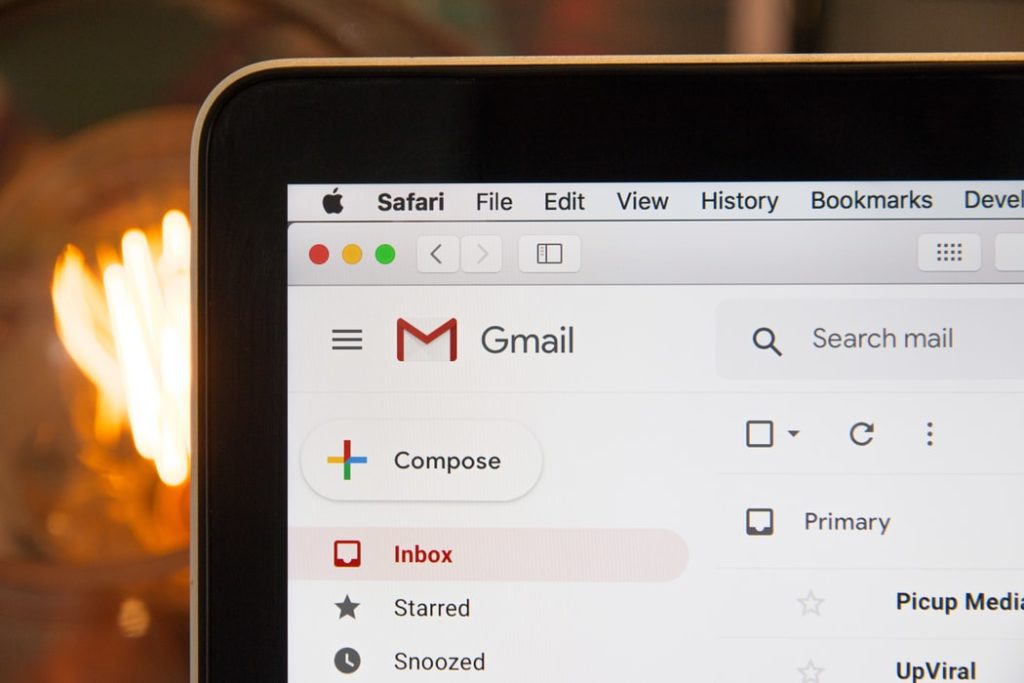
Sensitivity requires you to think about the person you're reaching out to. What is he or she going through as he or she opens or reads your email?
Show care to prospects by adding lines to your outreach templates that genuinely empathize about their situation.
Avoid writing an introduction with lines like, "I've read your blog post and I liked it..". This insensitive copy line won't make the cut.
Add some human elements when personalizing your outreach copies. Do you have any content pieces that resonate with the times and situations of your target audience?
By showing more of the benefits of your content to actually help people, you get to receive more positive responses to your outreach emails.
2. Avoid Prospects Hit Hard by COVID-19
There are industries where you will find outreach campaigns to still gain positive rates similar to the usual season.
You'll also find verticals that have been obviously hit hard by COVID-19, which results in lower response and link placement rates for publishers belonging to those industries.
Whether you're reaching out to promote your infographics for bloggers and influencers, it's wise to know if your outreach campaign is getting its optimal results.
It is best to avoid prospects in industries greatly affected by COVID-19. These include bloggers and publishers from weddings, travel, and hotel.
While you may still get responses from them, you won't receive much attention that you deserve compared to before.
Avoid any closed business when considering prospects. Go to their website or social media account and see if there's a note that mentions they're closed or might be closed for business.
3. Leverage Resource Page Opportunities
While there are so many negative things going around, one positive thing to take note is that most webmasters do now have time to work on their pages.
This means they can make any necessary fixes on their webpages as faster and as often as they could.
If you're running a link building campaign, particularly for resource page opportunities, you'll find that a lot of webmasters are more responsive than ever before.
If you're aiming for a couple of links through broken link building, you don't have to hesitate to reach out to webmasters and letting them know of your link requests.
Here are some guides that can help you walk through the process of broken link building:
- The No Non-Sense Guide to Broken Link Building
- A Detailed Guide to Resource Pages
- Broken Link Replacements for Better Link Conversion
4. Revisit Content Themes That Resonate With Your Prospects
There are content pieces that will have a breakthrough in today's time.
When you tap content themes related to current people's needs, you get to showcase what your brand is about and at the same time, addressing what your target audience cares at the moment.
Here are some content themes you can consider for your content creation campaign:
- social distancing
- cleanliness
- positivity
- remote work
- work and life balance
- parenting
Revisit your brand's content theme and see if there are any gaps you can fill in right now. You can use Ahrefs' Content Explorer or Buzzsumo to start looking for content topics that are related to your site.
5. Discover Data Stories To Match the Interests of Journalists
Data stories play very well for journalists, as it is based on real-life experiences that resonate well with publishers' audiences.

If you're in an industry where topics may play off of coronavirus, there are stories from customers you can still leverage as part of your pitch. Fields such as paper manufacturing can think of data stories about social distancing.
Stories aligned to content themes get good replies and coverage. While journalists are picking up ways to discover stories, use what you have from your customers' experiences, and see how you can pitch a value-driven data story to them.
TL;DR
While we don't know when this COVID-19 will end, we have to think of ways to leverage opportunities arising from the situation.
Check out brands in other industries with great content strategy. Understand how they're keeping up with the pace in terms of links. Assess the relationships between their pages and their linking pages. Get insights from their execution.



